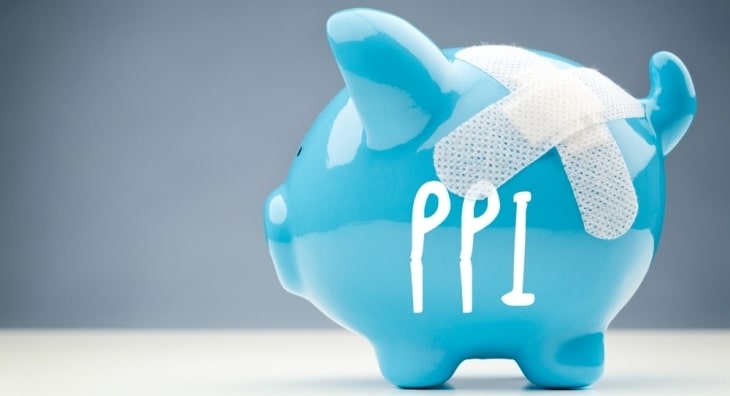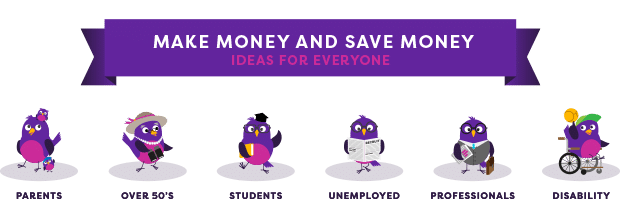Jasmine Birtles
Your money-making expert. Financial journalist, TV and radio personality.


Reclaim PPI for free. Why pay someone else to do it when it’s actually pretty simple to do yourself and keep ALL the dosh?
And when I say ‘pay someone else’, we’re talking £100’s and even £1,000 or so to do something that doesn’t take much effort. What a cheek!
Yes, you could claim back £1,000’s in mis-sold Payment Protection Insurance (PPI) by contacting your bank or whichever company lent you money in the last few years (ideally in the last 6 years but older ones can apply as well) and make them check to see if they foisted PPI on you at the time.
Here’s how you can uncover the scam and get your money back.
As the banks have made £billions out of mis-selling PPI to unsuspecting borrowers, that means that other, dodgy companies have seen a way for them to make cash by helping you get those payments back.
But they grab at least a quarter of that money for themselves…sometimes even a third.
So if you get £3,000 in compensation you could end up handing over £1,000 to them!
Now, on the one hand you could say “well, I wasn’t going to bother to do it myself so it’s better to have the £2,000 than nothing” and that’s quite true.
But, like switching your gas and electricity, it doesn’t take that much effort…certainly not £1,000-worth to get all of the cash yourself.
Payment protection insurance (PPI) has been flogged by banks and credit providers for years. People who took out loans, mortgages or other credit were often ‘encouraged’ (often pretty much forced) to have PPI at the same time ‘in case they couldn’t pay the loan at any point’. Even people who were freelance and didn’t have a job to be made redundant from were told to take them out!
Now it’s payback time and you can make some money out of it by claiming those payments back yourself.
Also, beware of rip-off Payday middlemen – find out about them here
There are a few easy steps you need to take. Here they are:
Step 1: Get out the paperwork from your original loan. If you can’t find it, contact your lender and request a copy (if you had a few loans and mortgages contact all of them!).
If you can’t remember who your loans were with then check your credit report. It will list any debts that were alive within the last six years, even if they’re now closed. Get a free credit report with CreditExpert here.

The terms of the agreement will help you to establish whether or not you were mis-sold PPI, and will be needed as evidence when making your reclaim.
N.B. Don’t worry if you’ve thrown out all the paperwork, just get your bank to send you copies.
Step 2: Ask yourself the following questions. We’ve put in brackets what your answer should be had the bank sold PPI to you properly:
If any of your responses didn’t match up with ours, you’ve probably been mis-sold PPI and should read on to find out how to make a claim.
If all of your responses did match ours but you still feel uncomfortable about the way you were sold PPI, read on to find out who you should contact and how to go about contacting them.
Still, even if you’re not sure if you were actually mis-sold PPI, it’s still worth claiming. Basically, if there’s a chance you weren’t informed properly, make a complaint. Many banks were systemically mis-selling PPI so it’s quite likely that you were one of the victims.
Step 3: To ensure that your claim has the best chance of success you should also consider these factors before progressing….
Steph 4: Do not get conned into using one of those nasty little companies that phone people up telling them they can get you compensation…for a fee.
Yes, they might be able to get you compensation, but they will charge you through the nose for doing something you could do quite easily, for nothing! Ignore them. They’re money-grabbers too. Just follow our step-by-step guide here and claim PPI for free.
Step 5. Go to the online PPI resource section of the Financial Ombudsman Services (FOS) website, and fill in the consumer questionnaire which is located in the middle of the page.
Step 6. Once you’ve completed the questionnaire print it off twice and sign it.
Keep a copy for your records and then post it to your lender.
Then await your first rejection!
Step 7: When the rejection does come (and be warned, it probably will) store it somewhere safe as you’ll need it later on.
If you’re one of the very lucky few who receive a positive reply, congratulations! But don’t be dazzled by what the lender first offers you, as it might be a lot less than you’re actually owed.
The average refund on a single premium claim is around the £2,000 mark, so don’t make do with the paltry £500 the bank is so ‘generously’ offering.
If in doubt call the FOS on 0800 234 567.
Step 8. So you’ve tried playing it nice and you’ve been rejected.
Now it’s time to do a bit of name dropping as you reclaim PPI for free.
Now here’s the really important bit.
Step 9: If, after trying all of the above, your lender is still not budging, it’s time to do what you threatened. Complain to the FOS which will look into both sides of the argument and settle the debate for you. If your claim is valid and genuine, your chances of getting back what you’re owed are good.
Be warned! The FOS can only get involved if your lender was FCA regulated.
If you purchased your PPI through a bank then you should be fine, but through anyone else you might have a problem.
Contact the FOS or the FCA (Financial Conduct Authority) today to find out whether or not your lender was FCA regulated.
Importantly, though…persevere. Go into this knowing that you’re likely to get at least one rejection. Of course you are, the banks aren’t going to hand over your money without a little resistance. But remember, they’re banking on the fact that after one rejection you’ll be embarrassed into silence. Don’t let it happen.
PPI was designed to help cover your monthly loan repayments if you were to become sick, injured in an accident or unemployed. If any of these things happened your income might take a considerable nose dive, which for most of us would cause major problems. This is where your PPI would come swooping into action. It would pay out a set amount of money for a set amount of time, helping to cover your monthly mortgage, loans, credit and store card repayments. So far, so good.
And that’s just it, the intentions of PPI are good but in the wrong, greedy hands it has often been mis-sold to people who neither need it, nor can afford it. Banks have been the main culprits, pushing PPI on customers trying to take out loans or credit cards. Why did they do it? Because it made them a serious amount of money. PPI companies pay the banks a lovely commission for every policy they sell so they have tried to push it wherever they could. At one point these sales were making the banks around £5billion a year!
The Office of Fair Trading banned banks from selling PPI directly with loans, insisting that they give customers a seven day cooling off period to prevent banks and building societies pushing PPI on to customers when they applied for credit. However, this still means that hundreds of thousands of us have paid into these policies and are still paying…for nothing.
Want to reclaim other bank charges? Use our template letter here.
In their greedy bid to sell as much PPI as possible, banks have often glossed over its limitations.
So to summarise, the banks put their needs before ours and mis-sold PPI to thousands of their customers. Nice.

photo credit: www.moneybright.co.uk/
